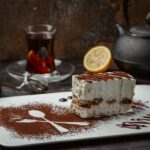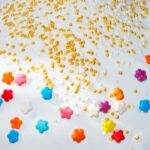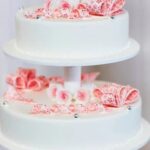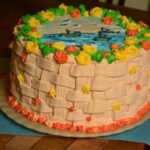Are you looking to add a personal touch to your homemade cakes? Learn how to make your own cake decorations and take your baking skills to the next level. In this article, we will cover the importance of personalized cake decorations and provide a comprehensive guide on creating stunning designs for all occasions.
Personalized cake decorations are a fantastic way to showcase creativity and add a unique flair to any dessert. Whether you’re a beginner or an experienced baker, making your own decorations allows you to tailor each cake to suit the recipient’s preferences or the theme of the event. From basic techniques to advanced methods, this blog post will explore everything you need to know about crafting custom cake decorations.
We’ll start by discussing the essential materials and tools needed for making cake decorations, as well as tips for selecting high-quality ingredients. Then, we’ll provide step-by-step instructions for both simple and advanced decorating techniques, ensuring that even beginners can achieve professional-looking results.
Additionally, we’ll delve into creating edible decorations using fondant, gum paste, and royal icing, as well as ideas for non-edible decorations like paper toppers or plastic figurines. Get ready to unleash your creativity and enhance your baking talents with our comprehensive guide to making your own cake decorations.
Essential Materials and Tools
When it comes to making your own cake decorations, having the right materials and tools is essential to creating professional-looking designs. Whether you’re a beginner or experienced baker, there are certain items that you’ll need to have on hand in order to bring your creative cake ideas to life.
List of Necessary Items
Before you start making your own cake decorations, it’s important to ensure that you have the right materials and tools. Some essential items include fondant, gum paste, royal icing, food coloring, piping bags, decorating tips, edible glitters or pearls, and a rolling pin. Each of these items plays a crucial role in the decoration process and will allow you to experiment with different techniques and designs.
Description of Each Tool and Its Purpose
Understanding the purpose of each tool is key to successful cake decorating. For example, a rolling pin is used to flatten fondant or gum paste for covering cakes or creating shapes. Piping bags and decorating tips are essential for adding intricate details and designs to your cakes.
Edible glitters and pearls can add an extra touch of sparkle and elegance to your creations. By familiarizing yourself with how each tool is used, you’ll be better equipped to create beautiful cake decorations.
As you gather the necessary materials and tools for making your own cake decorations, remember that quality is key. Using high-quality ingredients will not only result in better-tasting decorations but also ensure that they hold up well on your cakes over time.
Additionally, investing in durable tools will make the decorating process smoother and more enjoyable overall. With the right materials and tools at your disposal, you’ll be well on your way to creating stunning homemade cake decorations that are sure to impress.
Choosing the Right Ingredients
When it comes to making your own cake decorations, the quality of your ingredients can make a significant difference in the final result. Whether you are creating fondant flowers or royal icing designs, using high-quality ingredients is crucial for achieving professional-looking decorations that not only look great but also taste delicious.
One important aspect of choosing the right ingredients for homemade cake decorations is the type of coloring and flavoring agents you use. It’s essential to select gel food colors rather than liquid ones, as they won’t alter the consistency of your fondant or royal icing. Additionally, using natural flavorings such as pure vanilla extract or fruit essences can enhance the taste of your edible decorations without adding artificial flavors.
Another key consideration is the type of sweeteners and fats you incorporate into your homemade cake decorations. Opting for pure cane sugar and unsalted butter can improve the texture and flavor of your fondant, gum paste, or buttercream decorations. Avoiding artificial sweeteners and hydrogenated oils can lead to a more natural and delectable outcome.
| Ingredient Type | Recommended Brand |
|---|---|
| Gel Food Colors | Americolor Gel Paste Colors |
| Natural Flavorings | Nielsen-Massey Pure Vanilla Extract |
| Sweeteners | Domino Pure Cane Sugar |
| Fat | Unsalted Butter (any reputable brand) |
Lastly, when working with dairy products in your cake decorations, consider using fresh dairy instead of its processed counterpart. Fresh dairy helps achieve a smoother texture in fondant or buttercream and aids in preventing a greasy finish on edible creations.
By carefully selecting high-quality ingredients for your homemade cake decorations, you are ensuring not only visually appealing results but also delightful flavors that will leave a lasting impression on anyone who enjoys your delectable creations.
Basic Techniques for Cake Decorating
When it comes to cake decorating, mastering basic techniques is essential for creating beautiful and professional-looking designs. Whether you’re a beginner or have some experience with baking and decorating, these foundational skills will set the stage for more advanced creations. Here are some fundamental techniques and tips to get you started on your journey of creating your own cake decorations.
1. Crumb Coating: Before applying any decorative elements, it’s important to crumb coat your cake. This involves spreading a thin layer of frosting over the entire cake to seal in any loose crumbs. This step creates a smooth surface for further decoration and prevents crumbs from showing through the final layer of frosting.
2. Piping: Piping is one of the most versatile decorating techniques and involves using a piping bag with different tips to apply frosting in various designs and patterns. From borders and flowers to lettering and intricate details, piping allows for endless creative possibilities.
3. Fondant Application: Fondant is a popular choice for covering cakes due to its smooth finish and ability to be molded into different shapes. To apply fondant, roll it out into a thin, even layer and carefully drape it over the cake before smoothing it down with gentle pressure.
By mastering these basic techniques, you’ll be well-equipped to tackle more advanced decorating methods with confidence. Remember to practice patience and precision as you work on honing these skills, as they serve as the building blocks for creating stunning homemade cake decorations.
For more guidance on how to make your own cake decorations using basic techniques, continue reading our blog for additional tips and inspiration.
Advanced Decorating Techniques
Once you have mastered the basic techniques for cake decorating, you may want to explore more intricate methods to create elaborate and stunning cake decorations. Whether you are looking to elevate your skills for personal enjoyment or as a professional baker, mastering advanced decorating techniques can take your cakes to the next level. In this section, we will explore some advanced methods for making elaborate cake decorations that will impress your friends, family, and clients.
One advanced technique for cake decoration is piping intricate designs with royal icing. This delicate and versatile medium allows decorators to create fine details, lace patterns, and even three-dimensional figures. Learning how to control the flow of royal icing through piping bags and mastering different tips and nozzles can open up a world of decorative possibilities.
Another impressive skill is sugar sculpting, which involves creating detailed shapes and figurines from pulled or blown sugar. This technique requires practice and patience but can result in show-stopping cake decorations such as delicate flowers, elegant swans, or colorful butterflies. Understanding the science behind working with sugar is essential for success in this intricate art form.
For those interested in modern cake design trends, learning how to use edible printing technology can add a contemporary flair to your creations. Edible ink printers allow decorators to reproduce intricate images, patterns, or even photographs onto sheets of edible paper that can be used as cake toppers or incorporated into fondant designs.
As you continue your journey into advanced cake decorating techniques, remember that practice makes perfect. Don’t be discouraged if your initial attempts do not meet your expectations – refining these skills takes time and dedication. Keep experimenting with new ideas and styles until you find your unique voice in the world of cake decoration.
Remember that mastering advanced decorating techniques is all about perfecting your craft. With the right materials, tools and knowledge at hand anyone has the capability on how to make own custom made ornaments right at home using their creativity making it an affordable option over buying them pre-made at a store.”.
Creating Edible Decorations
How to Make Your Own Cake Decorations
One of the most rewarding aspects of cake decorating is creating your own edible decorations from scratch. Not only does this allow for complete customization and personalization of your cakes, but it also ensures that you are using high-quality, safe ingredients. In this section, we will explore the different methods for making edible decorations using fondant, gum paste, and royal icing.
Using Fondant
Fondant is a popular choice for creating smooth and elegant decorations for cakes. To make your own fondant decorations, you will need confectioners’ sugar, gelatin, glycerin, and flavoring. Begin by melting the gelatin and combining it with glycerin and flavoring. Gradually add confectioners’ sugar until the mixture forms a pliable dough. Roll out the fondant and use cookie cutters or special molds to create shapes for your cake.
Making Gum Paste Flowers
Gum paste is a versatile medium for crafting delicate flowers and other intricate decorations. To make your own gum paste, you will need gum tragacanth or tylose powder (to help the gum paste harden), confectioners’ sugar, egg whites, and flavoring. Mix these ingredients together to form a smooth dough that can be rolled out thinly and shaped into flowers, leaves, or other decorative elements for your cake.
Royal Icing Techniques
Royal icing is often used for fine details or intricate designs on cakes. To make your own royal icing decorations, you will need egg whites or meringue powder, confectioners’ sugar, and flavoring. This type of icing can be piped onto the cake to create lace-like patterns, intricate borders, or delicate accents. It dries hard which makes it perfect for creating three-dimensional decorations that stand out on the cake.
By learning how to make your own cake decorations using these edible mediums, you can elevate your cake designs with unique and personalized elements that are sure to impress. Additionally, by creating your own edible decorations, you have greater control over the flavors and quality of the ingredients used in the decorating process.
Non-Edible Decorations
Creating personalized and unique cake decorations can be a rewarding and enjoyable part of the baking process. Non-edible decorations offer a wide range of creative possibilities for customizing cake designs to suit any occasion or theme.
Whether you’re celebrating a birthday, wedding, or holiday, non-edible decorations can add an extra touch of flair to your baked creations. In this section, we will explore some ideas for non-edible decorations and provide tips for incorporating them into your cake designs.
When it comes to non-edible decorations, the options are virtually limitless. From paper toppers and plastic figurines to fabric ribbons and silk flowers, there are countless ways to adorn your cakes with unique and visually appealing elements. Consider the theme or purpose of your cake when choosing non-edible decorations, as this will help guide your selection process.
Here are some popular ideas for non-edible decorations that you can use to enhance your cake designs:
- Paper Toppers: Create custom paper toppers using printed images, cut-out shapes, or personalized messages.
- Plastic Figurines: Use small plastic figurines or toys to add a fun and playful element to your cakes.
- Fabric Ribbons: Tie decorative fabric ribbons around cake tiers for an elegant and sophisticated look.
- Silk Flowers: Incorporate artificial silk flowers into your cake designs for a touch of natural beauty.
When using non-edible decorations on cakes, it’s important to consider the placement and size of each element to ensure that they complement the overall design without overwhelming the cake itself. Additionally, be mindful of any safety concerns when selecting non-edible decorations, especially if they will be in direct contact with food. By carefully choosing and placing non-edible decorations on your cakes, you can create visually stunning designs that are sure to impress your guests.
Troubleshooting Common Issues
Making your own cake decorations can be a fun and rewarding way to personalize your baked creations. However, just like any other craft, it’s not uncommon to encounter some issues along the way. In this section, we’ll discuss some common problems that you may encounter when making cake decorations and provide solutions to help you troubleshoot these issues.
One common issue when making cake decorations is icing that is too runny or too thick. If your icing is too runny, try adding more powdered sugar to thicken it up.
On the other hand, if your icing is too thick, you can add a few drops of milk to thin it out to the desired consistency. It’s important to achieve the right texture for your icing as it will have a direct impact on how well your decorations hold their shape.
Another common problem is air bubbles in fondant or gum paste decorations. To prevent air bubbles from forming, make sure to knead your fondant or gum paste thoroughly before rolling it out. If you do end up with air bubbles, gently prick them with a pin and then smooth out the affected area with your fingers.
Lastly, if your cake decorations are not sticking properly to your cake, try lightly brushing the back of the decoration with a small amount of water or edible glue before attaching it to the cake. This will help create a stronger bond between the decoration and the surface of the cake.
By being aware of these common issues and knowing how to address them, you’ll be better equipped to troubleshoot any problems that may arise while making your own cake decorations. Don’t be discouraged by setbacks – learning from these experiences will only make you a better decorator in the long run.
Conclusion
Making your own cake decorations can be a fun and rewarding experience. Whether you’re a beginner or an experienced baker, creating personalized decorations adds a special touch to your cakes that store-bought options just can’t match.
In this blog post, we’ve covered everything you need to know about making your own cake decorations, from essential materials and tools to advanced decorating techniques. Now, let’s delve into the specifics of how to make your own cake decorations.
To start, you’ll need some basic materials and tools for making cake decorations. This includes items like fondant, gum paste, various decorating tips, piping bags, and food coloring. Each tool serves a specific purpose in the decoration process, whether it’s rolling out fondant smoothly or creating intricate designs with piping tips.
Next up is choosing the right ingredients for your homemade cake decorations. Quality ingredients are crucial for achieving professional-looking results. Depending on the type of decoration you’re making, you may need different types of flour, sugar, flavorings, or other specialty ingredients. It’s important to select the best ingredients for the specific decoration type you want to create in order to achieve the desired texture and taste.
Once you have your materials and ingredients ready, it’s time to dive into the basic and advanced techniques for cake decorating. We’ll walk through simple step-by-step instructions as well as more intricate methods for making elaborate cake decorations. Whether you’re looking to create classic designs or push the boundaries with innovative techniques, we’ve got you covered with tips and examples to help elevate your cake designs.
In addition to edible decorations like fondant and royal icing, we’ll also explore ideas for non-edible decorations such as paper toppers or plastic figurines. And if you encounter any issues along the way, we’ve included troubleshooting tips and solutions so that you can salvage any decorations that don’t turn out as expected. With all this information at your fingertips, there’s no limit to how creative and personalized your cakes can become.
Additional Resources
In conclusion, learning how to make your own cake decorations can be a fun and rewarding experience. By following the essential materials and tools needed, choosing the right ingredients, and mastering basic and advanced decorating techniques, you can elevate your cake designs to new heights. Whether you prefer edible decorations made from fondant or gum paste, or non-edible decorations like paper toppers or plastic figurines, there are endless possibilities for personalizing your cakes.
Homemade cake decorations not only add a unique touch to your baked creations but also allow you to control the quality of ingredients used. By creating your own decorations, you can ensure that they are made with high-quality ingredients and tailored to your specific taste and dietary requirements. This level of customization is unmatched when compared to store-bought decorations.
As this blog post has emphasized throughout its sections, experimenting with different techniques and materials is key to perfecting your cake decorating skills. It is important not to be discouraged by any initial setbacks; troubleshooting common issues and salvaging decorations that don’t turn out as expected are part of the learning process. Remember to have fun with your creations and let your imagination run wild – after all, the beauty of homemade cake decorations lies in their personal touch.
Frequently Asked Questions
What to Use to Make Edible Cake Decorations?
Edible cake decorations can be made using fondant, gum paste, or modeling chocolate. These can be shaped and molded into different designs like flowers, figures, or other decorative elements to adorn cakes.
What Do You Use to Make Cake Toppers?
Cake toppers are typically made using fondant, gum paste, or a combination of both. These materials can be easily shaped and molded into various designs such as letters, numbers, or even figurines to create personalized cake toppers.
What Machine Is Used to Make Cake Toppers?
The machine commonly used to make cake toppers is a 3D printer. This innovative technology allows for the precise creation of intricate designs and shapes using edible materials like fondant or gum paste. By using a 3D printer, cake decorators can bring their unique cake topper designs to life with precision and detail.

Welcome to my blog about home and family. This blog is a place where I will share my thoughts, ideas, and experiences related to these important topics. I am a stay-at-home mom with two young children. I hope you enjoy reading it! and may find some helpful tips and ideas that will make your home and family life even better!





